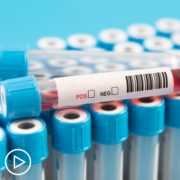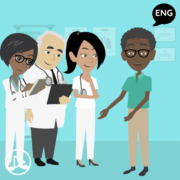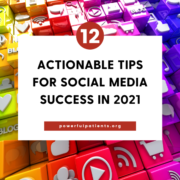Expert Advice | Living and Thriving With an MPN
Expert Advice | Living and Thriving With an MPN from Patient Empowerment Network on Vimeo.
Is it possible to live well and thrive with a myeloproliferative neoplasm (MPN)? Dr. Naveen Pemmaraju, an MPN specialist and researcher, shares key advice for patients, stressing the importance of taking an active role in learning about their disease and communicating with their team to manage common symptoms and side effects.
Dr. Naveen Pemmaraju is Director of the Blastic Plasmacytoid Dendritic Cell Neoplasm (BPDCN) Program in the Department of Leukemia at The University of Texas MD Anderson Cancer Center. Learn more about Dr. Pemmaraju.
Related Programs:
Transcript:
Katherine Banwell:
In your experience, what does it mean to thrive with an MPN?
Dr. Pemmaraju:
Well, I really love that phrase so much because it’s meaningful to me.
You know, you’re talking about something that resonates with me and my patients, which is not just living with the MPN, but you’re talking about thriving with an MPN. That’s so resonant to us. I think really, I would go for three parts to that.
One is that it’s an acknowledgment or a complete understanding of the disease. So, not denial, the opposite of denial, whatever that is, Katherine. So, understanding as much as you can about the disease which is, I encourage people to Google, look up on the internet. I just, what I want you to do is couple that with talking about it in context with your provider. I think the worry that people have is you’re at your home midnight, you’re Googling stuff, it may or may not be right. So, anyway, so just do that, but then bring the information to the next visit. So, fully understanding and learning as much as you can in your own way. Number two is to be able to have a quality of life that is not just living with the disease, but actually being successful at your relationships, your work, whatever it is that brings you meaning and joy in life. And that sometimes has to do with the MPN paradigm, sometimes has to do with the other stuff we said.
But I think, doing that, not despite the fact that you have the MPN, but acknowledging it with that, right? And then I think the third aspect is, if you have some way or some platform to be able to express yourself with the MPN because it’s such a rare disease, we think maybe only four out of 100,000 people worldwide get these. A lot of patients, not for everybody, by the way, but a lot of patients are thriving on support groups.
It used to be you have to be in person, that’s very difficult to do with rare diseases. But now online, social media, a lot of different ways to get involved. Whether someone’s an introvert or an extrovert, whether someone wants to be private or public, all those things are hugely important, so it’s a personal decision. But for many, they want to get out there, and it’s not necessarily this scientific information exchange, although that’s good. But the support and encouragement and comradery of talking to other patients about what we’re talking about.
It is, in fact, a little bit more facile to do it with the more common diseases, breast cancer, all of these things. And it’s much more difficult, social media online has opened that up. So, to me, I think that’s a kind of mix that I’ve been seeing in my patients. And that leads to empowerment. It leads to taking control of the things that can be controlled, leaving the things that can’t be controlled to what needs to happen. And then an understanding and anticipation of things that may happen in the next few visits, in the next few years. I think that’s how people can thrive with these MPNs.
Katherine Banwell:
Dr. Pemmaraju, When it comes to living and thriving within an MPN, managing disease symptoms and treatment side effects is a big part of that. How can symptoms and side effects impact life with an MPN?
Dr. Pemmaraju:
Katherine, I’m glad you asked about that because I think before we get into the science and the pathobiology and all these complex things, it really starts with the patient. And as you and your team and others have really noted, the MPN for many of our patients, it is a chronic, often lifelong journey. And we really need to reemphasize in this modern era, the patient-centered experience and the caregiver experience.
And so I would emphasize a few things. One is that our MPNs are oftentimes so-called invisible diseases to other people. So, this phrase that just really is tough for us to hear for our patients and our loved ones, “Oh, you don’t look like you’re sick. You don’t look like you have cancer.” So, it emphasizes the internal part of the internal medicine, that’s one.
Number two, it reminds you that you cannot tell on the external what kind of a war, a cytokine war that is going on inside of a patient. And so even though the blood counts are normal, the spleen is okay, the treatment paradigm is going okay, we don’t know what’s really going on. So, that’s why our great friend and colleague Ruben Mesa invented and pioneered the MPN symptom burden to really nail down what’s going on.
And then third is our treatments, Katherine, our treatments, while overall halting or stopping or helping the MPN can then introduce a whole other round of toxicity, side effects, and so we need to manage that.
So, both the disease itself and the treatments, two separate entities, and that’s what we need to be monitoring in the clinic.













